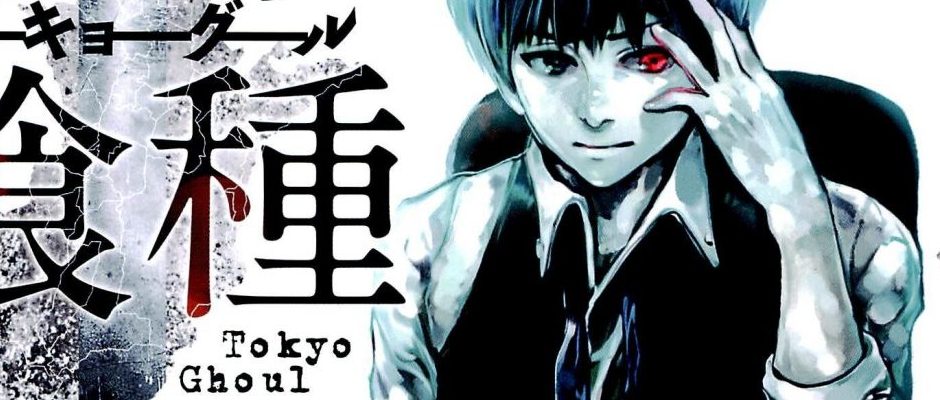Creator Redraws “Tokyo Ghoul” Manga’s First Issue

Laina Swatek ‘20 / Emertainment Monthly Assistant Comic Books Editor
Many, many things can happen over the course of five years. Sui Ishida, mangaka of the wildly popular Tokyo Ghoul and Tokyo Ghoul:re series, does not neglect this notion. To pay homage to the passing of time, Ishida recently redrew and rereleased the first chapter of his manga in full.
First serialized on September 8, 2011, in Weekly Young Jump, Tokyo Ghoul is a tragic story that immerses the reader in an universe of flesh-eating ghouls, moral struggle, and outstanding characters. It follows Kaneki Ken, a typical college student whose life is violently turned upside down by an unfortunate encounter and a questionable procedure. Thrust into a darkly morbid battlefield, Kaneki becomes a “half-human half-ghoul hybrid” that must survive entrapment between two worlds.

Regard for Ishida’s work spread as Tokyo Ghoul gained popular exposure, evidenced by the manga being picked up for serialization by American distributor Viz Media. Since its creation, the series has blossomed into two anime seasons, several game projects, a stage play, and a live film to be released in 2017. All of this new content continues to reel fans back in, even after the series’ completion, so much so that Ishida decided to continue the story in the sequel manga Tokyo Ghoul:re.
As the manga’s five year anniversary approached, Ishida announced plans to remake the first issue, Tokyo Ghoul #1 “Higeki” (meaning “tragedy”). The series has technically come to a close—and so fans were ecstatic to relive the initial thrill of falling in love with Tokyo Ghoul.
Ishida’s statement was officially covered in the October issue of Men’s Non-No, which began circulating in August 2016, wherein he commented on his decision to redraw “Higeki.” The artist claims he wanted to inspire a whole new audience and “reach out to the people who haven’t read it yet.”
Though this may seem like a ploy to draw in larger revenue, Tokyo Ghoul readers would argue differently. By hinting to his devoted fans that “reading this may give you a fresh feeling,” Ishida extends the hope that they will compare the rereleased content to its original. Simply looking at the sheer improvement of Ishida’s art is enough to entice his faithful audience to pick up a copy, as seen easily through comparison of panels.
As far as chapter content goes, Ishida absolutely delivered on his promise. Fans noticed that he gives Rize Kamishiro, the initial antagonist of the manga and the reason for Kaneki’s transformation, considerably more dialogue and appearances. In exchanges between Ken and his best friend, Hideyoshi Nagachika, words were added, omitted, and rearranged. Concerning a series like Tokyo Ghoul—known for its heavy plot, symbolism, and deeply developed characters—a remake was especially perfect to fortify the complex workings of the narrative.

Above all, the most noticeable difference between the original and the redraw is the updated art itself. There is something impressive and grounding in watching an artist improve over time, and Ishida certainly enhanced his illustrations. Hopefully, this issue will draw a new generation of Tokyo Ghoul fans to the series, who will grow to appreciate the magnificence of the universe it so beautifully creates.